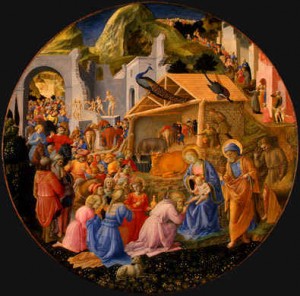The Archdiocese of Washington is hoping that by Monday morning these yard signs will be all over the Metro area inviting people to stop and think about the lasting value of the “perfect gift” for which they are spending hours on- line or in the mall searching and the PERFECT GIFT that is found in Jesus Christ.
Find the Perfect Gift
“Find the Perfect Gift” is our Advent initiative that gives you an opportunity to share the gift that Jesus has been in your life and to invite others to “come and see.” We hope, not only that people will visit our website and take some time to think about the reflections but when a friend or neighbor asks you about the sign, you will share the difference knowing Jesus and participating in a parish makes in your life. That’s it! That the whole program!
Invitation to Dialogue
At least we thought that was it until an alert parishioner called this ad to my attention. So, now it seems that we have an opportunity for dialogue. What is striking about the Atheist ad is that they have chosen to define themselves by what they don’t believe rather than what they do believe! The ad also implies that faith and reason are not compatible. This could not be more wrong. The church has always embraced reason as a pathway to faith. Fr. John Hardon writes, “While it is the role of the intellect to perceive truth, reason is the basis or evidence used by the mind to attain truth.” If one is faithful to the search for truth, one finds God and therefore, finds faith. The search for truth is what led two very different but influential Catholic women to faith and to the church; St. Teresa Benedicta of the Cross (Edith Stein) and Dorothy Day. They could not have chosen more different paths, Edith Stein as a philosopher and academic and Dorothy Day as a radical, journalist and advocate for the poor. Whenever I encounter this argument that reason and faith are not compatible, I think of the story of these two women.
Join the Campaign
If you would like to be part of our initiative, get to Mass early this weekend and ask for a sign. Also, we would love to hear how many signs you see in your neighborhood, on the drive to work, on your running route or from the window of your bus or Metro car. We are posting pictures on Facebook, if you have a camera handy and can snap a picture.




